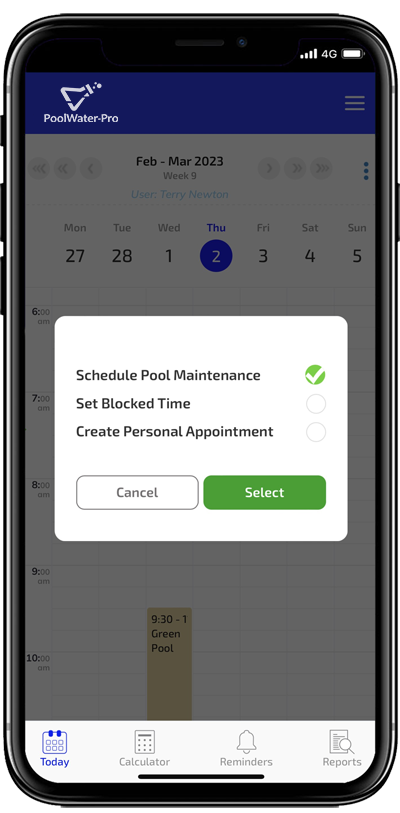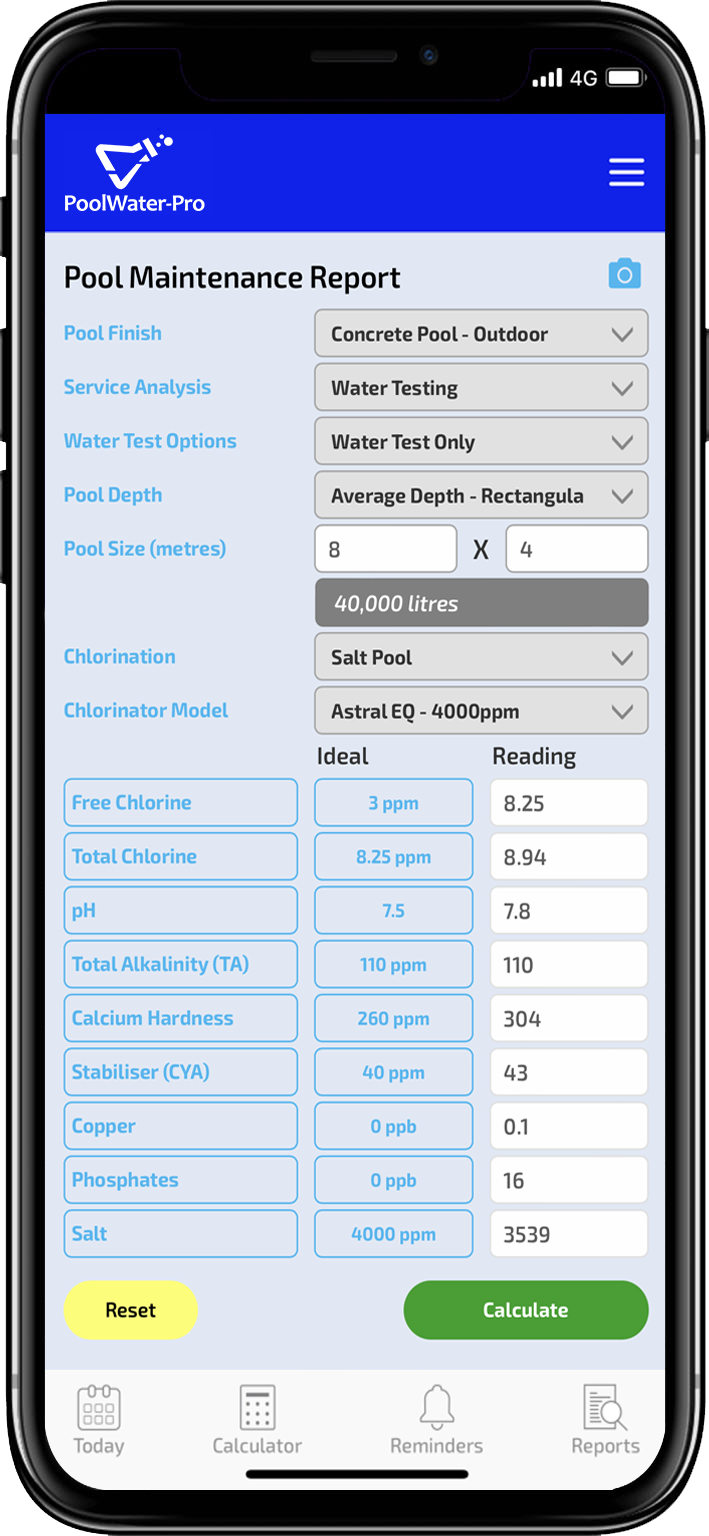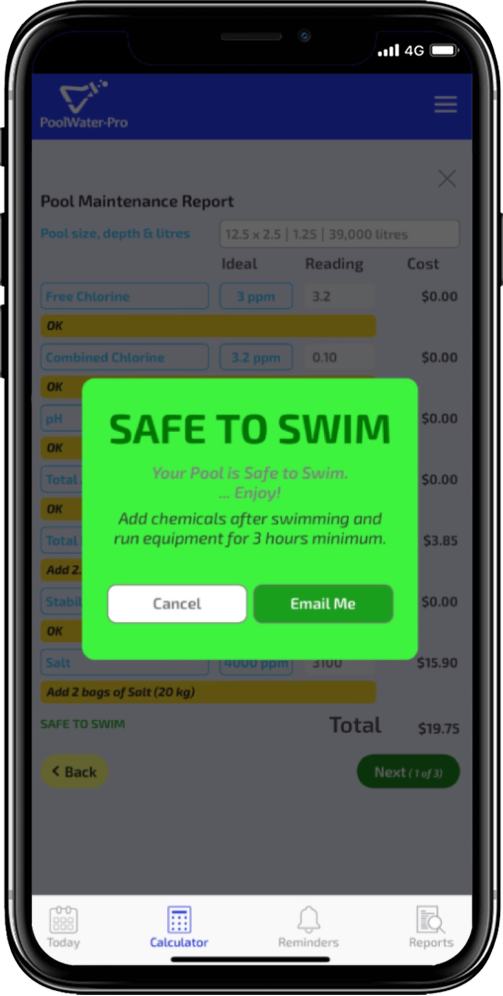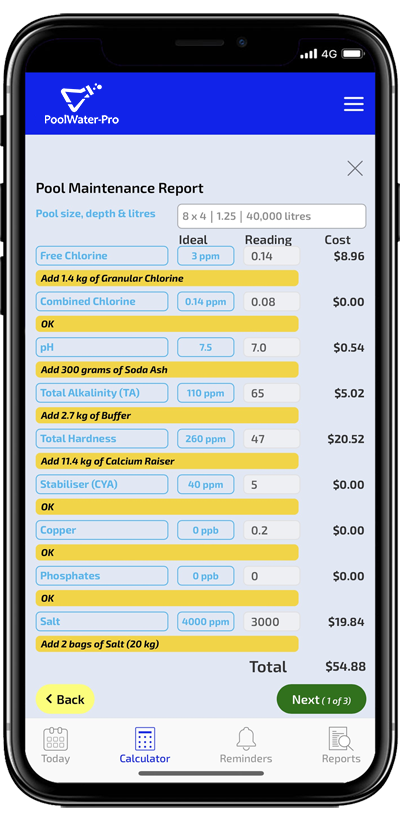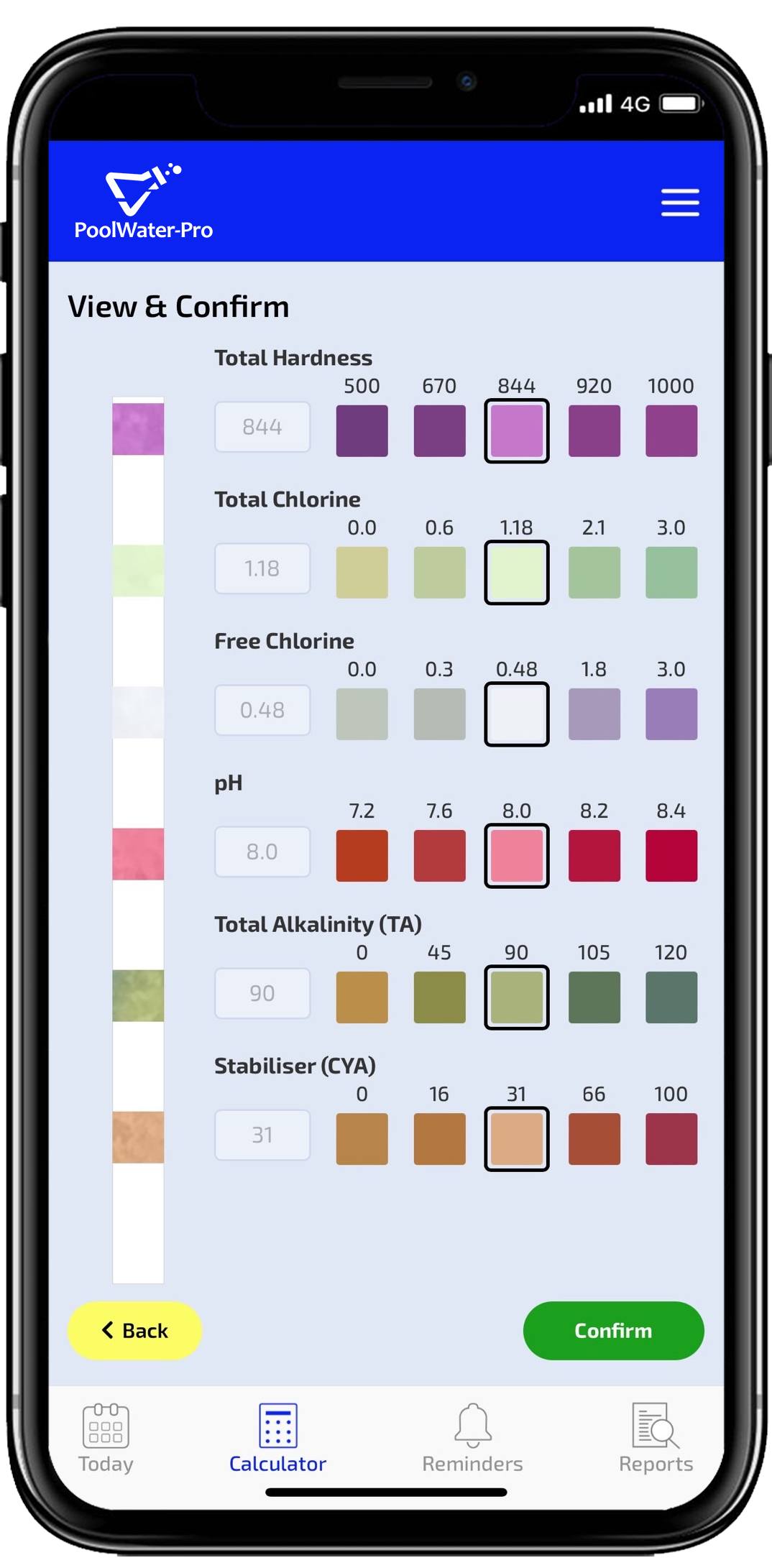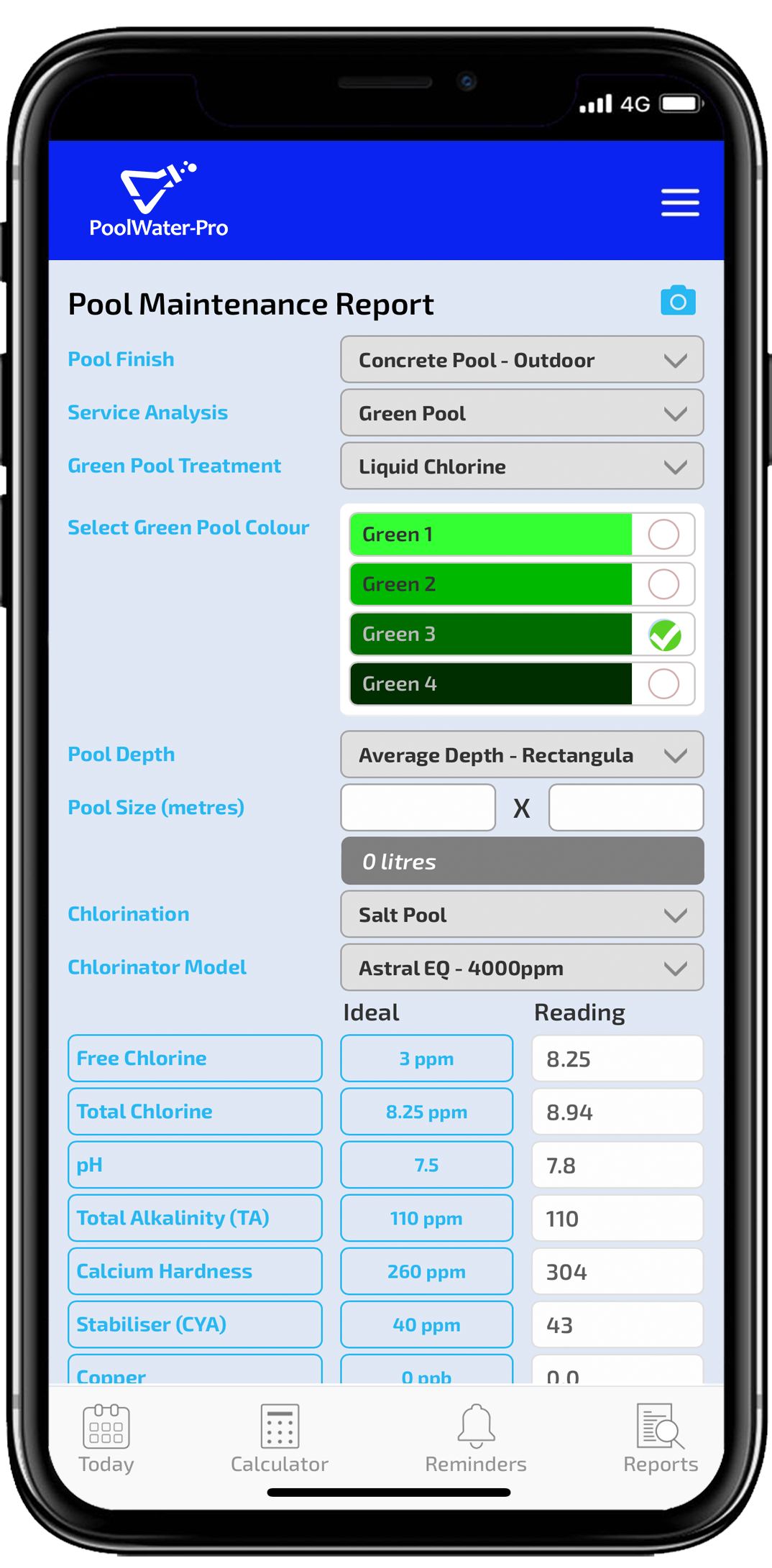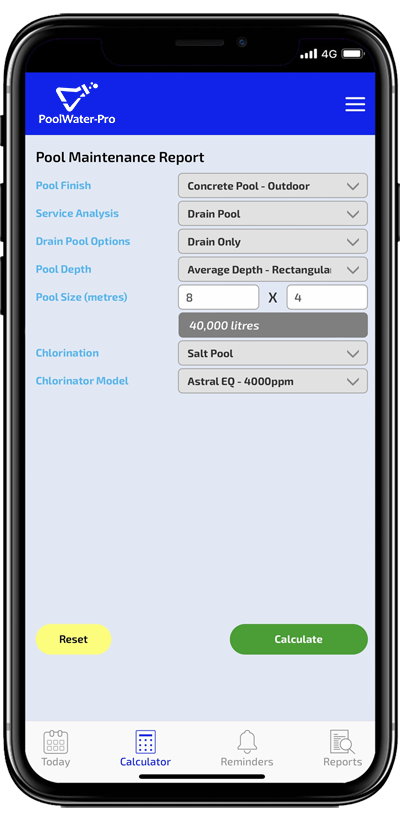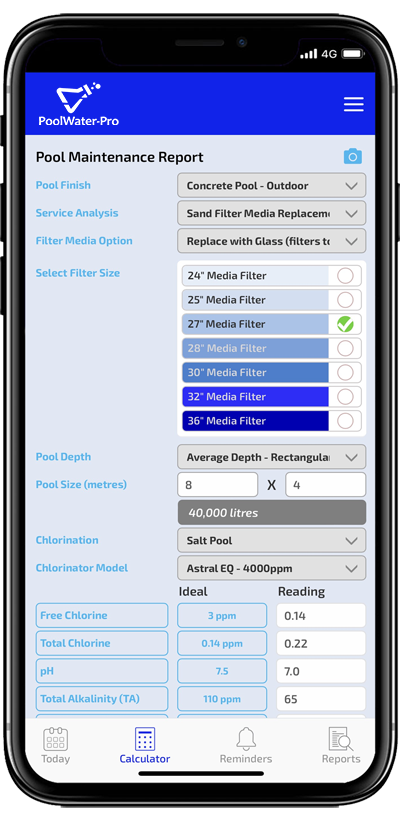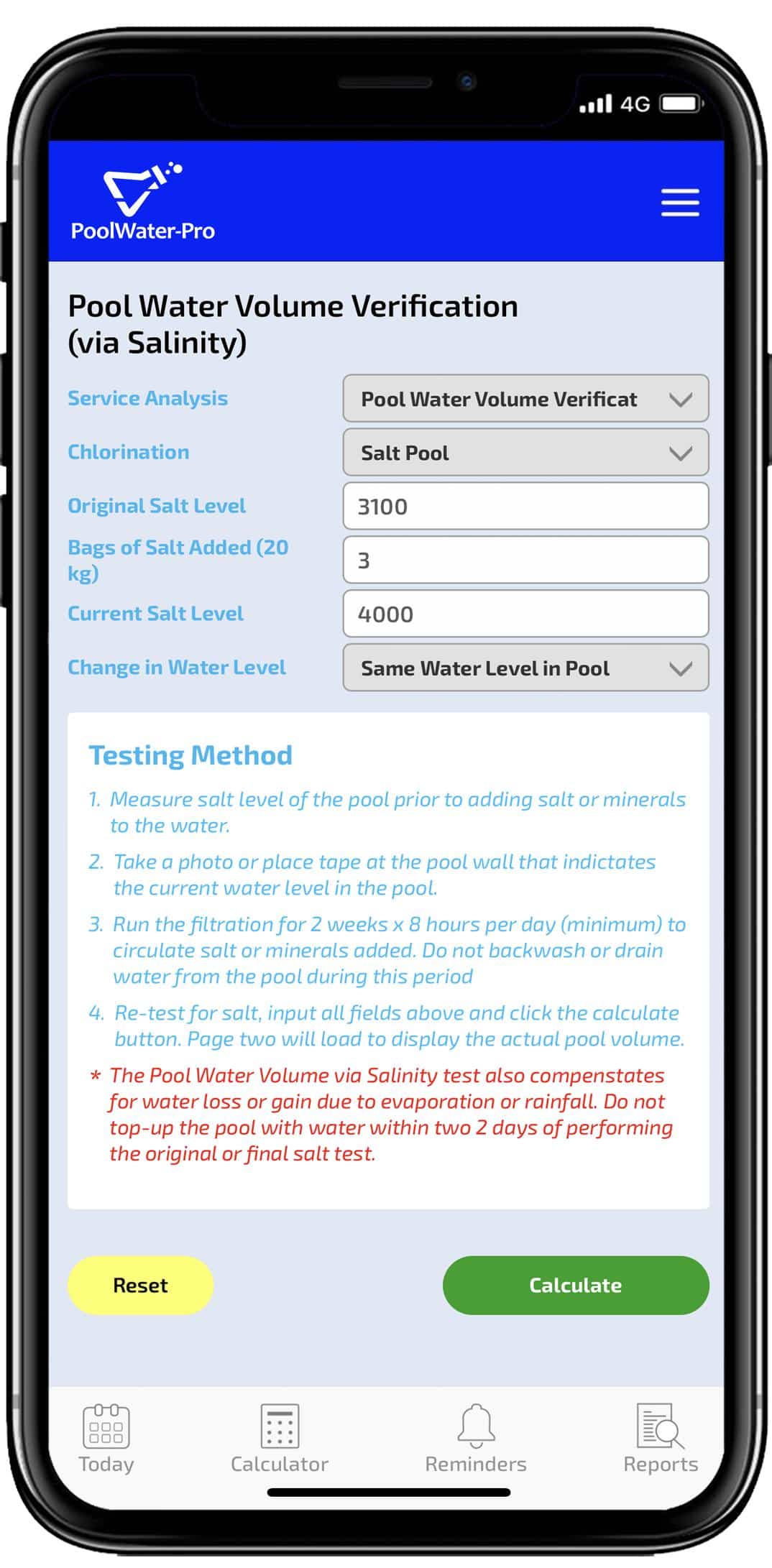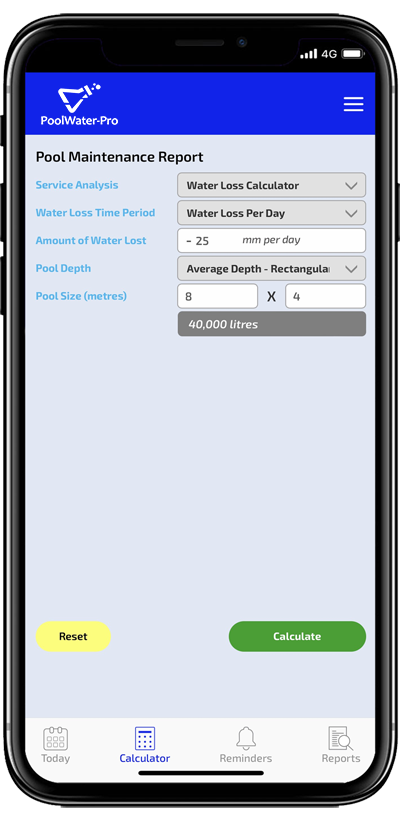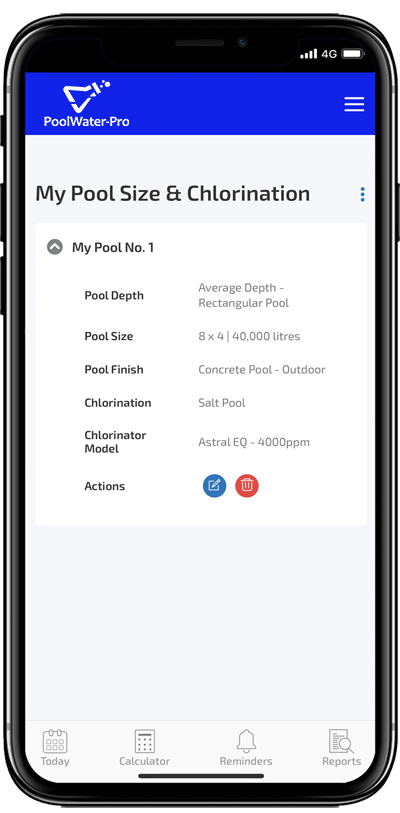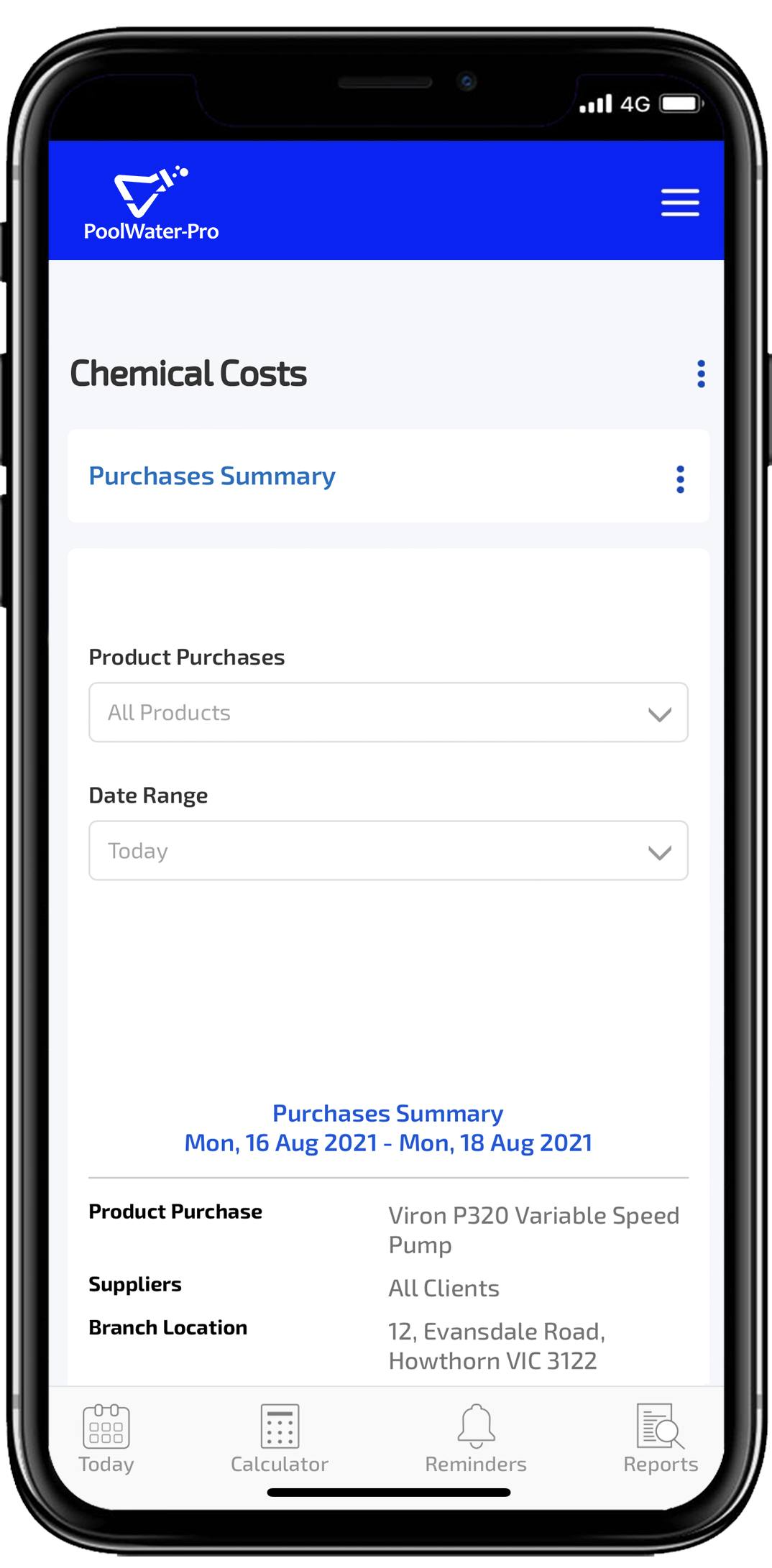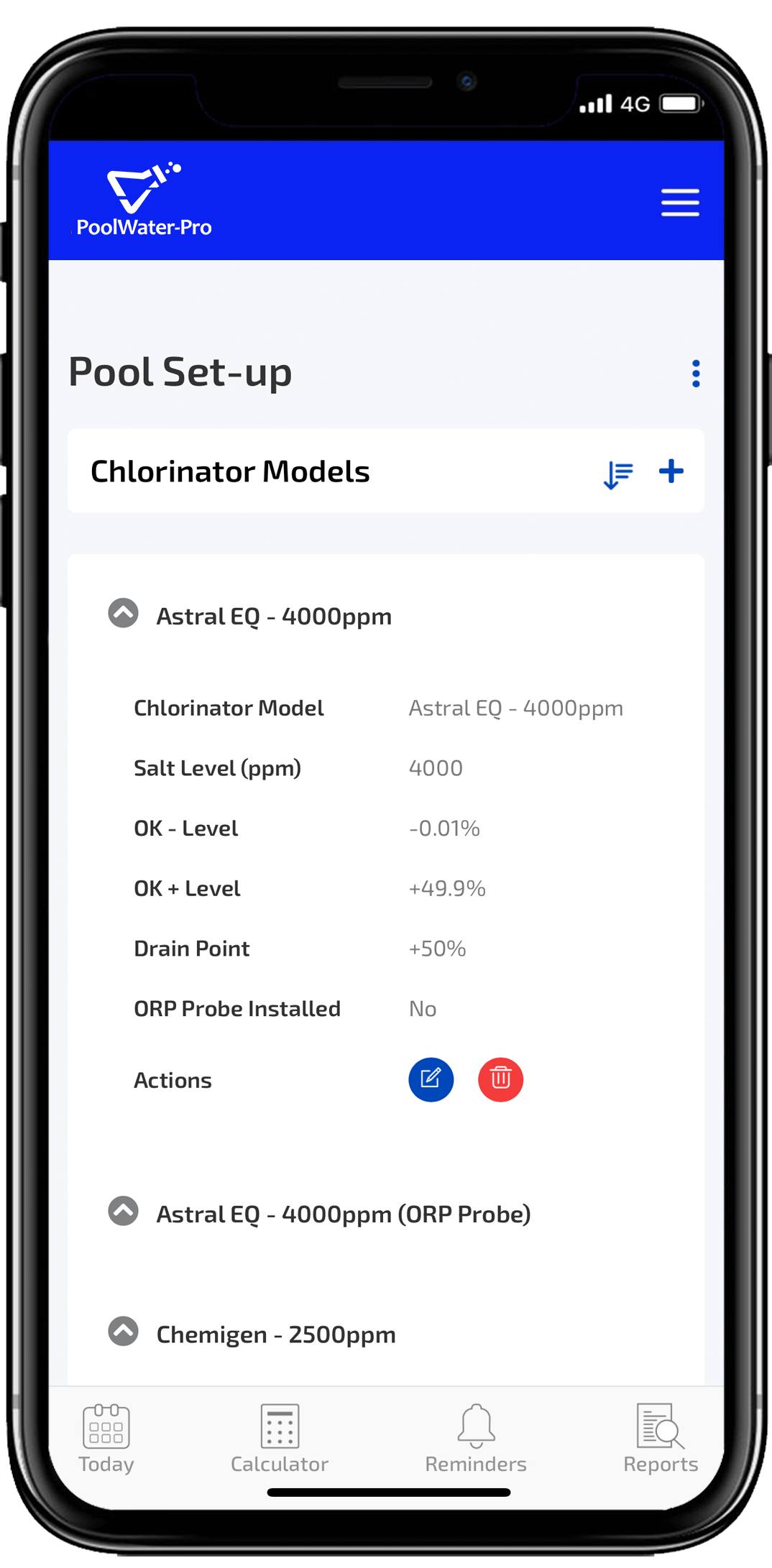Dynamics of Pool Water Chemistry
Maintaining water quality in your swimming pool involves a combination of circulation, filtration and chemical balance. Your pool pump works to circulate water from the pool, passing it through the filter, any connected heaters and chlorinators and then returns filtered water back to the pool. This circulation process also helps to distribute chemicals evenly throughout the pool after they’ve been added. The pool filter cleans out dirt and debris, to help keep your pool visibly clean and clear. In summer run the filter for 8-10 hours per day and in winter for about half this time. Gradually decrease running times coming out of summer and incrementally increase them after winter. The amount of filtering time required may vary, depending on the pool’s environment and the level of swimming activity.
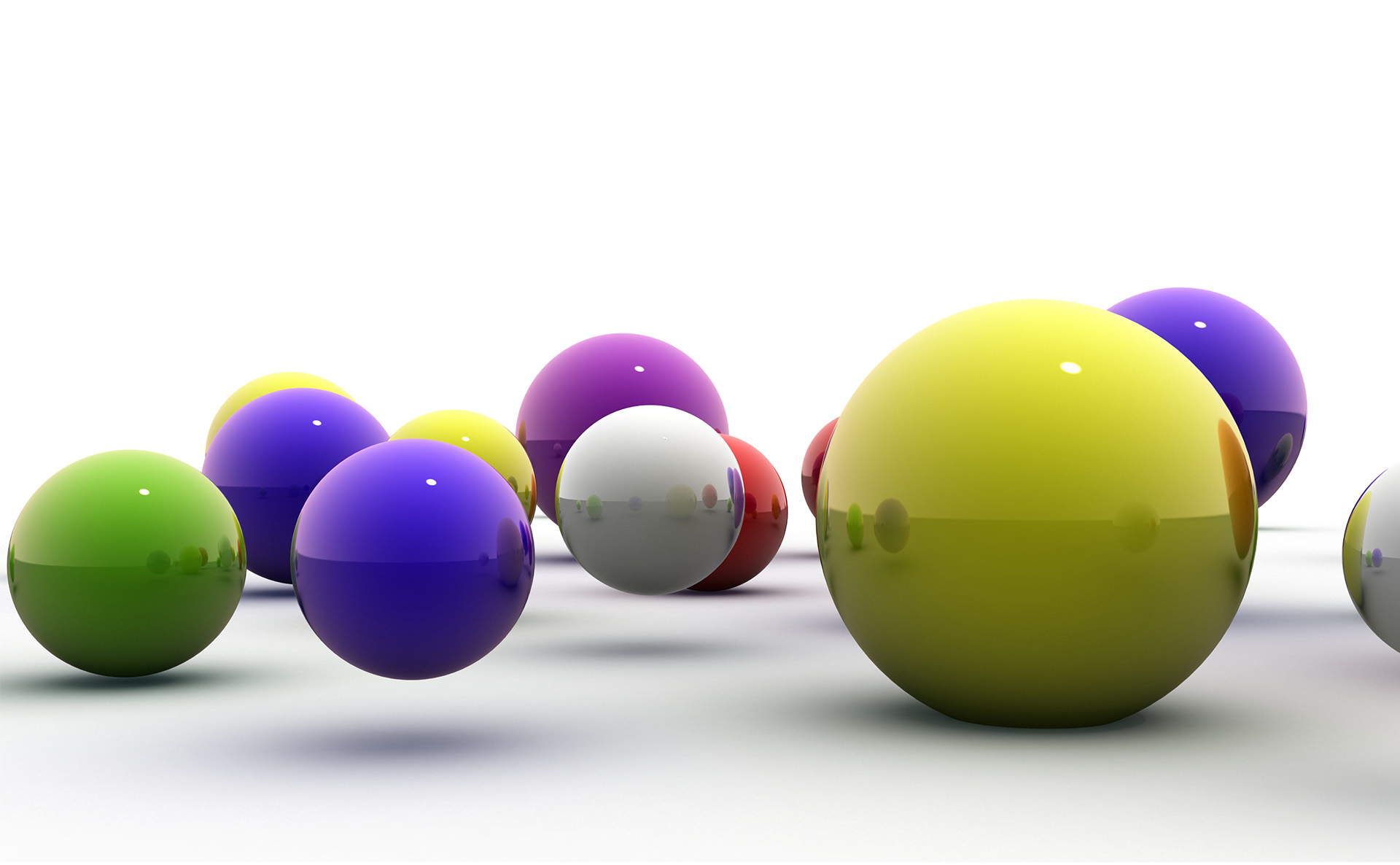
- Chlorine
- pH
- Total Alkalinity (TA)
- Stabiliser (CYA)
- Calcium Hardness
- Understanding Pool Chemistry Interactions
- Algae Prevention & Algaecide
- Reducing Combined Chlorine with a Non-Chlorine Shock
Chlorine
Chlorine disinfects and sanitises your pool water by killing algae, bacteria and other microbes. Chlorine is also an effective algaecide.
In a pool, there are three types of chlorine, Free Chlorine, Total Chlorine and Combined Chlorine.
Free Chlorine
Free chlorine actively sanitises the water, kills viruses, bacteria and neutralises other contaminants.
Combined Chlorine
Combined chlorine is formed when free chlorine reacts with contaminants such as urine, sweat and organic debris. This reaction causes free chlorine to become less effective, can cause odours and can lead to eye irritation for swimmers.
Total Chlorine
Total chlorine is the sum of both free and combined chlorine, representing the overall chlorine concentration in the pool.
Maintaining appropriate levels of free chlorine ensures effective sanitation, while keeping combined chlorine levels low prevents unpleasant odours and eye irritation.
Regular testing and proper chlorination helps to maintain a clean and safe swimming environment.
Sunlight and heat both affect the amount of chlorine required. On sunny days, chlorine can lose up to 90% of its effectiveness within two hours.
By using stabiliser (CYA), which absorbs the sun’s UV rays, it can reduce this loss to approximately 20% in the same time period.
Stabiliser not only prolongs the lifespan of chlorine, but also reduces the amount of chlorine that is consumed.
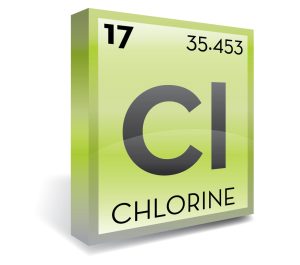
pH
pH is an abbreviation for “potential Hydrogen,” and is the measure of water acidity.
The scale ranges from 0 to 14, with 7 being neutral. Anything below 7 is acidic and above is alkaline.
For concrete and vinyl liner pools, the ideal pH is 7.5, while for fibreglass pools it’s 7.2.
Hydrochloric acid or pH decreaser is used to lower pH in your pool and soda ash or pH increaser is used to raise the pH.
The pH of our eyes typically ranges from 7.0 to 7.3, so acidic water (below 7.0) can cause stinging and redness. Acid also removes natural oils from the body, resulting in itchy and dry skin.
Over time, acidic water can corrode metal surfaces, screws, etc, inside your pool, pump, filter and heater. It can also etch plaster, grout, stone, concrete tiling, while plastic on cleaners, toys, or other equipment may become brittle and prone to breaking.
If the pH drops much below 7.0, the amount of available chlorine is greatly reduced, creating an environment that promotes bacteria and algae growth.
When the pH is too high (above 7.8), the chlorine in your pool will no longer be effective in sanitising and killing harmful bacteria.
A high pH can also increase the amount of chlorine consumed, cloudiness of your pool water & cause scaling along the sides of your pool.
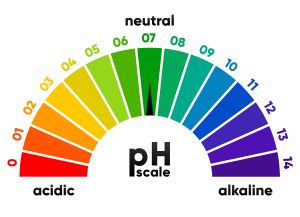
Total Alkalinity (TA)
Total alkalinity is the sum of all alkaline substances in your pool water.
In swimming pools, the total alkalinity (TA) should be between 80 to 120 parts per million. Total alkalinity within this range stabilises the pH level of your pool and prevents rapid pH changes.
High total alkalinity (200 parts per million or more) is excessive and can lead to cloudy pool water and scaling on the pool sides, equipment and plumbing.
Elevated alkalinity also causes the pH level of your pool to rise, making it challenging to adjust the pH level.
Low total alkalinity (below 80 parts per million) makes it difficult to increase the pH level of the water and results in acidic water, which corrodes pool surfaces and equipment.
The total alkalinity and pH are interconnected. Raising the total alkalinity will also increase the pH of your pool. It’s recommended to use buffer (sodium bicarbonate) when raising total alkalinity to minimise pH increases.
When adjusting total alkalinity, it is advisable to initially raise the total alkalinity higher than necessary, so that when acid is added to lower the pH level, total alkalinity reduces to be in the correct range.
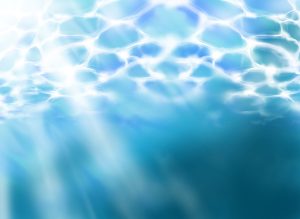
Stabiliser (CYA)
Stabiliser (CYA) is necessary in outdoor pools to maximise chlorine’s effectiveness when exposed to heat and UV light.
Stabiliser not only extends chlorine’s life-span, but also reduces the amount of chlorine consumed. However, high stabiliser can limit chlorine’s effectiveness.
The recommended maximum stabiliser level is 40 parts per million (40 ppm) and free chlorine should be 7.5% of the stabiliser level to ensure adequate sanitisation (ie if stabiliser is at 40 ppm, free chlorine should be 3 ppm).
If stabiliser exceeds 40 ppm, free chlorine should be maintained at 7.5% of this level (ie with 100 ppm stabiliser, free chlorine should be 7.5 ppm).
Stabiliser (CYA) can interfere with chlorine (ORP) sensor readings. For pools with an ORP sensor installed, the recommended target for stabiliser is 20 ppm.

Calcium Hardness
Calcium hardness measures the dissolved calcium in pool water, with the recommended range between 80 to 500 parts per million.
It can increase through regular pool chemical use, such as granular chlorine containing calcium hypochlorite.
Low calcium hardness can cause water to become corrosive, damaging pool surfaces, equipment, fittings and causing staining.
Calcium chloride is used to increase hardness. High levels can lead to scaling on pool surfaces, cloudy water and eye irritation. Lowering hardness involves draining some of the pool water, using flocculent to collect excess calcium, or adding acid to raise saturation levels.
Checking calcium hardness is typically required every 6-12 months, unless using calcium hypochlorite, which may require more frequent checks.
Adding algaecide enhances chlorine effectiveness and prevents algae growth, especially during winter when chlorine maintenance may decrease.
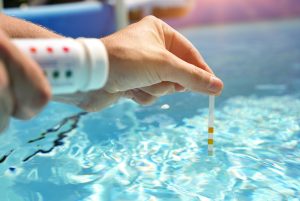
Understanding Pool Chemistry Interactions
It is necessary to understand the correlation between pool chemistry components including free chlorine, combined chlorine, pH, alkalinity, calcium hardness and stabiliser (CYA), for maintaining a clean and healthy pool.
High pH reduces chlorine effectiveness, while low alkalinity leads to pH fluctuations and potential damage to pool surfaces and equipment.
Calcium hardness, when too high, causes scale build-up and if too low, results in corrosive water damaging pool components.
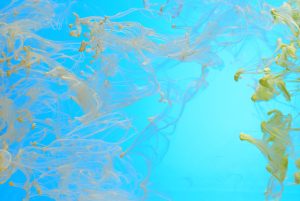
Algae Prevention & Algaecide
Adding algaecide to your pool enhances and prolongs the effectiveness of the chlorine used for sanitising and serves as a valuable backup in preventing future algae growth.
Algaecide is best used as a preventive measure against algae, although some copper-based products effectively eliminate algae. The use of copper-based algaecide should be minimised to avoid staining caused by excessive metals in the pool.
Algaecide is an excellent winterising product for pools, especially when filtering times are reduced and some people may not maintain chlorine levels regularly.
After adding algaecide to your pool, don’t swim for 24 hours.
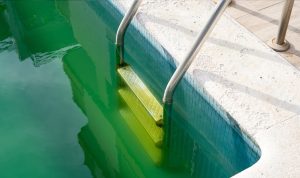
Reducing Combined Chlorine with a Non-Chlorine Shock
Non-chlorine shock treatments such as potassium monopersulphate do not directly increase free chlorine levels but instead oxidise organic contaminants and combined chloramines, improving water clarity and overall water quality. Although non-chlorine shock itself does not add chlorine, it indirectly aids in maintaining or boosting free chlorine levels by eliminating compounds that would otherwise consume available chlorine. As chloramines decrease, the chlorine previously bound to them becomes free in the water, which leads to higher free chlorine levels.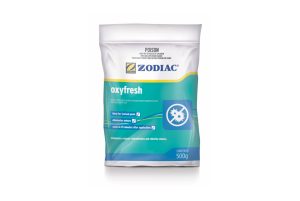
Chlorine disinfects and sanitises your pool water by killing algae, bacteria and other microbes. Chlorine is also an effective algaecide.
In a pool, there are three types of chlorine, Free Chlorine, Total Chlorine and Combined Chlorine.
Free Chlorine
Free chlorine actively sanitises the water, kills viruses, bacteria and neutralises other contaminants.
Combined Chlorine
Combined chlorine is formed when free chlorine reacts with contaminants such as urine, sweat and organic debris. This reaction causes free chlorine to become less effective, can cause odours and can lead to eye irritation for swimmers.
Total Chlorine
Total chlorine is the sum of both free and combined chlorine, representing the overall chlorine concentration in the pool.
Maintaining appropriate levels of free chlorine ensures effective sanitation, while keeping combined chlorine levels low prevents unpleasant odours and eye irritation.
Regular testing and proper chlorination helps to maintain a clean and safe swimming environment.
Sunlight and heat both affect the amount of chlorine required. On sunny days, chlorine can lose up to 90% of its effectiveness within two hours.
By using stabiliser (CYA), which absorbs the sun’s UV rays, it can reduce this loss to approximately 20% in the same time period.
Stabiliser not only prolongs the lifespan of chlorine, but also reduces the amount of chlorine that is consumed.

pH is an abbreviation for “potential Hydrogen,” and is the measure of water acidity.
The scale ranges from 0 to 14, with 7 being neutral. Anything below 7 is acidic and above is alkaline.
For concrete and vinyl liner pools, the ideal pH is 7.5, while for fibreglass pools it’s 7.2.
Hydrochloric acid or pH decreaser is used to lower pH in your pool and soda ash or pH increaser is used to raise the pH.
The pH of our eyes typically ranges from 7.0 to 7.3, so acidic water (below 7.0) can cause stinging and redness. Acid also removes natural oils from the body, resulting in itchy and dry skin.
Over time, acidic water can corrode metal surfaces, screws, etc, inside your pool, pump, filter and heater. It can also etch plaster, grout, stone, concrete tiling, while plastic on cleaners, toys, or other equipment may become brittle and prone to breaking.
If the pH drops much below 7.0, the amount of available chlorine is greatly reduced, creating an environment that promotes bacteria and algae growth.
When the pH is too high (above 7.8), the chlorine in your pool will no longer be effective in sanitising and killing harmful bacteria.
A high pH can also increase the amount of chlorine consumed, cloudiness of your pool water & cause scaling along the sides of your pool.

Total alkalinity is the sum of all alkaline substances in your pool water.
In swimming pools, the total alkalinity (TA) should be between 80 to 120 parts per million. Total alkalinity within this range stabilises the pH level of your pool and prevents rapid pH changes.
High total alkalinity (200 parts per million or more) is excessive and can lead to cloudy pool water and scaling on the pool sides, equipment and plumbing.
Elevated alkalinity also causes the pH level of your pool to rise, making it challenging to adjust the pH level.
Low total alkalinity (below 80 parts per million) makes it difficult to increase the pH level of the water and results in acidic water, which corrodes pool surfaces and equipment.
The total alkalinity and pH are interconnected. Raising the total alkalinity will also increase the pH of your pool. It’s recommended to use buffer (sodium bicarbonate) when raising total alkalinity to minimise pH increases.
When adjusting total alkalinity, it is advisable to initially raise the total alkalinity higher than necessary, so that when acid is added to lower the pH level, total alkalinity reduces to be in the correct range.

Stabiliser (CYA) is necessary in outdoor pools to maximise chlorine’s effectiveness when exposed to heat and UV light.
Stabiliser not only extends chlorine’s life-span, but also reduces the amount of chlorine consumed. However, high stabiliser can limit chlorine’s effectiveness.
The recommended maximum stabiliser level is 40 parts per million (40 ppm) and free chlorine should be 7.5% of the stabiliser level to ensure adequate sanitisation (ie if stabiliser is at 40 ppm, free chlorine should be 3 ppm).
If stabiliser exceeds 40 ppm, free chlorine should be maintained at 7.5% of this level (ie with 100 ppm stabiliser, free chlorine should be 7.5 ppm).
Stabiliser (CYA) can interfere with chlorine (ORP) sensor readings. For pools with an ORP sensor installed, the recommended target for stabiliser is 20 ppm.

Calcium hardness measures the dissolved calcium in pool water, with the recommended range between 80 to 500 parts per million.
It can increase through regular pool chemical use, such as granular chlorine containing calcium hypochlorite.
Low calcium hardness can cause water to become corrosive, damaging pool surfaces, equipment, fittings and causing staining.
Calcium chloride is used to increase hardness. High levels can lead to scaling on pool surfaces, cloudy water and eye irritation. Lowering hardness involves draining some of the pool water, using flocculent to collect excess calcium, or adding acid to raise saturation levels.
Checking calcium hardness is typically required every 6-12 months, unless using calcium hypochlorite, which may require more frequent checks.
Adding algaecide enhances chlorine effectiveness and prevents algae growth, especially during winter when chlorine maintenance may decrease.

It is necessary to understand the correlation between pool chemistry components including free chlorine, combined chlorine, pH, alkalinity, calcium hardness and stabiliser (CYA), for maintaining a clean and healthy pool.
High pH reduces chlorine effectiveness, while low alkalinity leads to pH fluctuations and potential damage to pool surfaces and equipment.
Calcium hardness, when too high, causes scale build-up and if too low, results in corrosive water damaging pool components.

Adding algaecide to your pool enhances and prolongs the effectiveness of the chlorine used for sanitising and serves as a valuable backup in preventing future algae growth.
Algaecide is best used as a preventive measure against algae, although some copper-based products effectively eliminate algae. The use of copper-based algaecide should be minimised to avoid staining caused by excessive metals in the pool.
Algaecide is an excellent winterising product for pools, especially when filtering times are reduced and some people may not maintain chlorine levels regularly.
After adding algaecide to your pool, don’t swim for 24 hours.

Non-chlorine shock treatments such as potassium monopersulphate do not directly increase free chlorine levels but instead oxidise organic contaminants and combined chloramines, improving water clarity and overall water quality.
Although non-chlorine shock itself does not add chlorine, it indirectly aids in maintaining or boosting free chlorine levels by eliminating compounds that would otherwise consume available chlorine.
As chloramines decrease, the chlorine previously bound to them becomes free in the water, which leads to higher free chlorine levels.

Introducing Effective Solutions
Simplify your pool maintenance routine with POOLWATER-PRO. Our software turns test-strips into accurate digital readings, right from your phone. Get instant alerts to know if your pool is safe to swim, plus any chemicals needed.
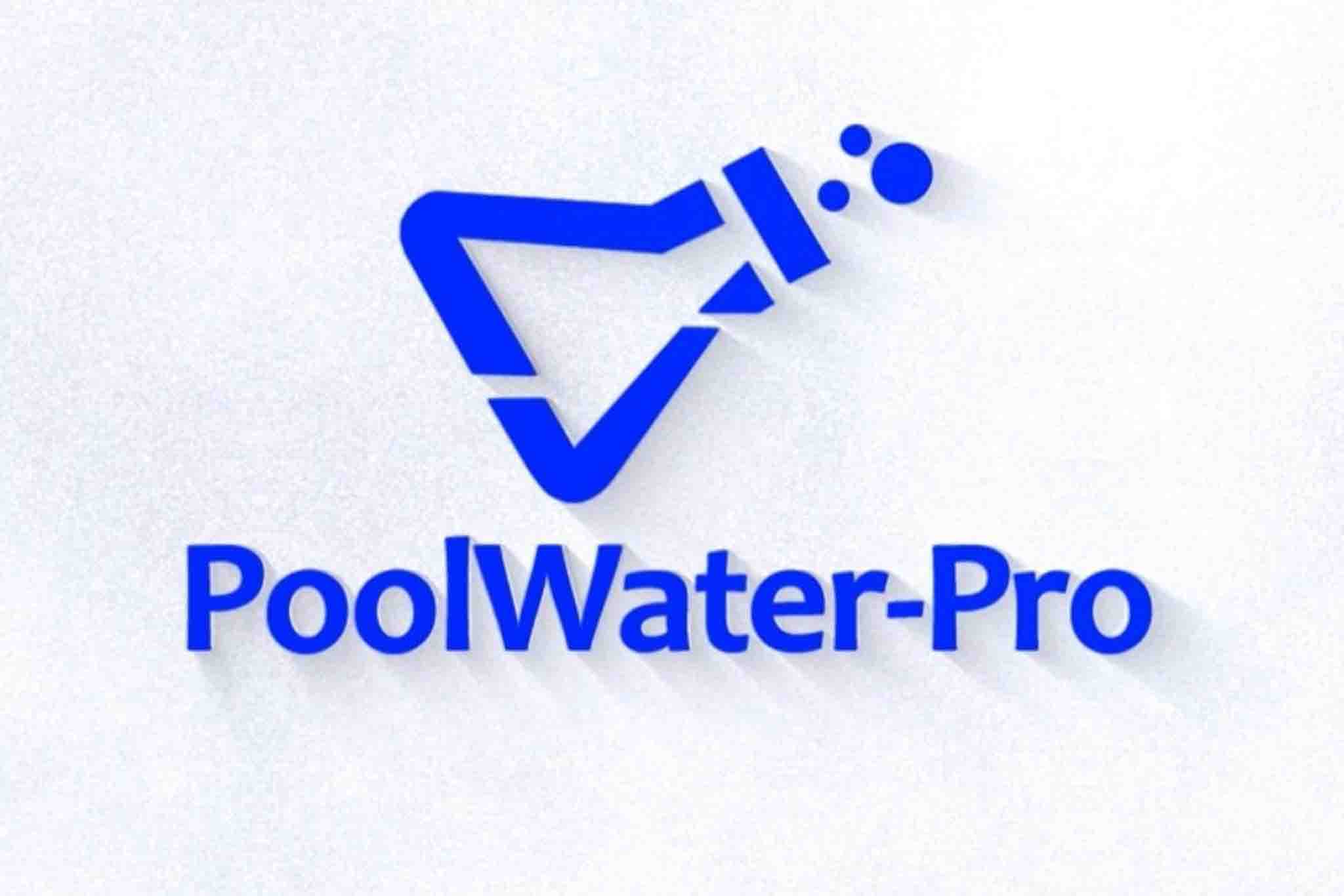
Introducing Effective Solutions
Simplify your pool maintenance routine with POOLWATER-PRO. Our software turns test-strips into accurate digital readings, right from your phone. Get instant alerts to know if your pool is safe to swim, plus any chemicals needed.

Your Path to Clarity
Watch this quick explainer video to see the platform’s features and how it can make pool care hassle-free.
Watch this quick explainer video to see the platform’s features and how it can make pool care hassle-free.




